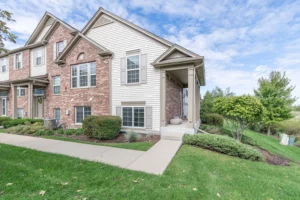Hurricane Helene brought a mix of powerful winds and torrential rain, leaving behind extensive damage. Property owners now face the challenge of filing claims, but many may not fully understand what their policies cover. Things can get murky when it comes to the differences between wind damage, water damage, and concurrent losses.
Wind Damage vs. Water Damage: What’s Covered?
One of the most significant sources of confusion for property owners after a hurricane is the distinction between wind damage and water damage. Each type of damage is covered differently, so understanding the fine print is critical.
Wind Damage
If Hurricane Helene damaged your property by blowing off shingles, tearing apart windows, or causing structural damage, this is typically covered under standard hurricane or windstorm insurance. Wind-driven rain that enters through an opening caused by the storm is also typically covered.
Water Damage
However, damage caused by storm surges or rising floodwaters often requires a separate flood insurance policy. If your property sustained flood damage and you don’t have flood insurance, it’s unlikely to be covered under your standard policy. The National Flood Insurance Program outlines flood coverage applications and the required documents to prove the loss.
To protect your property, check your policy for specific wording related to wind-driven rain and flooding. If you’re unsure, a public adjuster can help review your policy and provide clarity.
Concurrent Loss: When Wind and Water Collide
Post-Hurricane Helene, things can be tricky when wind and water team up to cause damage. This is called concurrent loss, and it can impact what your policy covers. Here’s the deal—if wind rips off the top of your roof and rain floods your home, you’ve got a mix of wind-driven and water damage. The problem? Insurance policies often treat them differently.
Many standard policies cover wind damage but exclude flooding. So, if your damage is caused by both, your insurer might only pay for part of the claim—or worse, none at all—depending on whether you have flood exclusions in your policy. Some policies even include concurrent loss exclusions, meaning coverage can be delayed or denied if the excluded peril, such as flooding, is deemed the primary cause of the damage—even if wind damage, which is normally covered, occurs as a result.
CONCURRENT LOSS EXAMPLE
A commercial retail owner in the bend of Florida likely experienced wind damage during the storm. The wind could have damaged the roof and blown open doors and windows, allowing floodwaters to enter the property. After the storm, it’s often hard to tell whether wind or water caused the damage first. For policyholders without flood coverage but with causation coverage, they may still be covered under a wind loss. If you’ve had a mix of losses, consider having your policy reviewed by professionals to understand your coverage fully. To request a policy review from our team, you can submit a request here: Free Policy Review
To see just how extensive the damage can be, ABC News gathered aerial footage of the flooding and wind destruction in North Carolina caused by Hurricane Helene. It’s a powerful reminder of the impact of concurrent loss.
Our team at Premier Claims knows how to advocate for the insured in instances like this. Having someone who knows the ins and outs of your insurance policy and how to match your damage accordingly can be the difference in the success of your hurricane claim. With the devastation of Hurricane Helene, nothing should be left to chance.
What You Need to Know About Hurricane Deductibles
Another often overlooked aspect of hurricane insurance is the hurricane deductible. Unlike a flat deductible, hurricane deductibles typically take a percentage of your property’s insured value. Some policies won’t specify a hurricane deductible, but will include something specific for wind. This often makes deductibles much higher than expected.
For example, if your property carries $500,000 in coverage and your policy includes a 3% hurricane deductible, you must cover the first $15,000 before insurance kicks in.
As Ashley Workman, our Senior Paralegal, explains, “Recovery after a storm like Helene is complex, emotionally draining, and can often seem insurmountable, but understanding your policy and how to navigate the claims process can help. Check your policy for mitigation requirements, or requirements to protect your property from further loss. Most policies will outline your duty to take the steps necessary to avoid further damage. It’s important to remember to do the minimum to accomplish that. Keep a record of your expenses to be submitted for reimbursement. Excessive costs for mitigation can exacerbate claim difficulties, as your carrier could refuse to pay those large expenses.”
Review your policy carefully to understand how your hurricane deductible works and how much you’ll be responsible for if you file a claim.
Take Control of Your Claim
Navigating your insurance policy after Hurricane Helene can feel overwhelming, but understanding key aspects of your coverage—like the difference between wind and water damage, hurricane deductibles, and concurrent losses—can help you take control of your claim. If you need help reviewing your policy or filing your claim, Premier Claims is here to guide you every step of the way. You don’t have to go through this alone; we’re here to help. Contact us today for immediate assistance!



